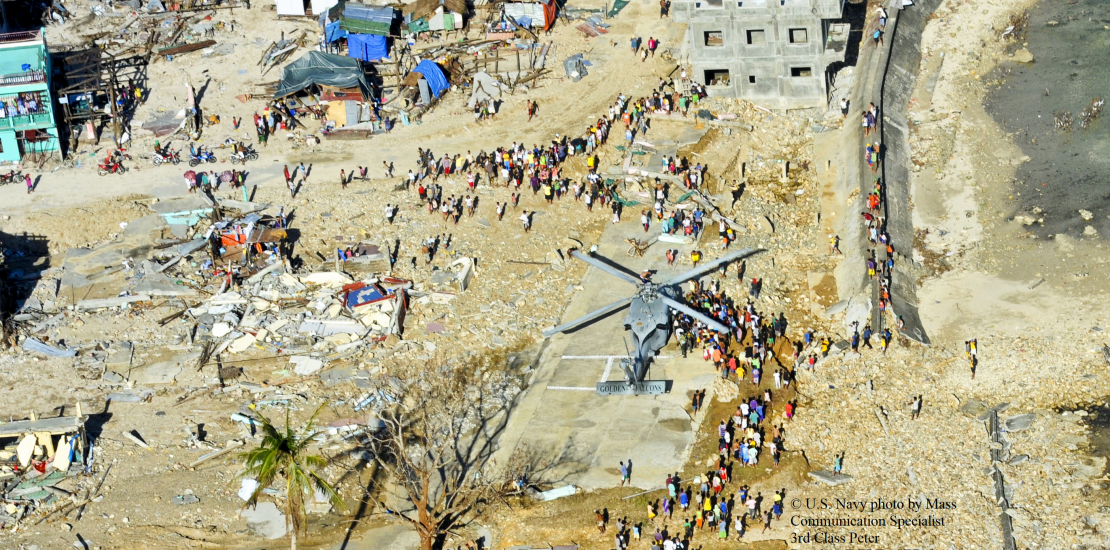Trends driving humanitarian need in 2024 (and what to do about them)
- January 12, 2024
- Posted by: Innovative Aid Strategy & Consulting
- Categories: Humanitarian, International

From The New Humanitarian, published on January 2024
View Original
GENEVA
Here are seven key trends likely to leave millions of people in need of food, medical care, shelter, or other humanitarian aid over the next year; plus, some ideas on what governments, aid groups, or individuals might do differently so 2025 looks a little better.
We publish this list against a backdrop of ongoing conflicts and violence – in Gaza, Ukraine, and the Democratic Republic of the Congo; in Sudan, Haiti, and Myanmar; and in so many other places where humanitarian needs are growing or have become a way of life for many. We also publish it with the knowledge that women and children, as always, will bear the brunt of the impacts.
This random-order list draws from our reporting around the globe; interviews with researchers, aid workers, and policymakers; and, most importantly, from our discussions with people working to rebuild lives in the midst of conflicts and disasters.
For a geographic take of humanitarian hotspots, look out – on 8 January – for our list of 10 crises that should demand your attention in 2024.
Efforts to deter migrants will drive up deaths and abuses
Despite abundant evidence that “prevention through deterrence” isn’t working, the United States, the EU, and many others are doubling down on this strategy and increasingly trying to export it to the countries that refugees, asylum seekers, and migrants come from and transit through. The result in 2024 will almost certainly be a rise in the already staggering number of deaths in the Mediterranean and in the US-Mexico border desert; more and more people languishing in dismal camps along US and European frontiers; expanded human rights violations and humanitarian suffering in countries of origin and transit; and the increasing instrumentalisation of migration as a tool to exert political pressure on the United States and European countries. We’ve seen this all already in Tunisia, Mexico, Morocco, Türkiye, Libya, Niger, the Darién Gap between Colombia and Panama, the Poland-Belarus border, the Russia-Finland border, and more. A better approach? Recognise that migration is both inevitable and frequently beneficial, especially when well managed.
Information warfare – with an AI twist – will put civilians at increasing risk
Misinformation and disinformation have always factored into conflicts and crises. But today’s tech, including easily accessible and rapidly evolving artificial intelligence – think image creators like Midjourney and insta-text tools like ChatGPT – multiplies the risks. Generative AI may be the equivalent of the next, big, mass-producible weapon, some analysts warn. Look at Gaza or Ukraine for snapshots of how information is weaponised. Examples of real-world harms are mounting elsewhere. In Sudan, both the army and the paramilitary Rapid Support Forces have waged an information war on social media – endangering civilians fleeing conflict with false information about safe areas. Smartphone surveillance has also targeted asylum seekers; it’s pushed by countries seeking to limit their numbers. Tigrayan massacre survivors say Facebook algorithms amplified hate and led to killings in Ethiopia. Myanmar’s Rohingya know the consequences: Hate speech demonised an entire community, adding fuel to their genocide. Former tech CEOs are pushing for guardrails. Governments from the US to the EU are rushing to try and regulate AI. But change may happen more organically. Citizen sleuths and professional fact-checkers are debunking disinformation from Ukraine to Indonesia, and the skills they employ can be fostered.
Water scarcity and drought will spur displacement
The Middle East and North Africa may be considered the worst-affected region, but water scarcity has become a global scourge, with droughts affecting everywhere from Peru to Kenya, from Syria to Afghanistan, from Honduras to Somalia. These events are only expected to proliferate as climate change worsens, with millions of people in fast-drying settings being pushed to cities for jobs that don’t exist. Children are particularly vulnerable to water scarcity, which is one of the main factors in preventable infant deaths. UNICEF says 739 million children – one in three globally – live in areas of high or very high water scarcity. Save the Children recently pointed out how water shortages linked to climate change increased the risks for children in Gaza. Conflict greatly worsens the situation, as in Yemen, where warring parties have both weaponised water and extorted citizens desperate for it. A lack of water can also cause crises in peaceful countries. A first-ever UN conference in 2023 dedicated to water security was a start to addressing the issue. But attendees left underwhelmed by the lack of concrete action and pondering why the next one won’t be until 2028.
For more information, please visit : thenewhumanitaire
Leave a Reply Cancel reply
Looking for help with your humanitarian or development innovative actions? Or maybe you’re interested in full training services. Whatever you need, we’re here to help you.
